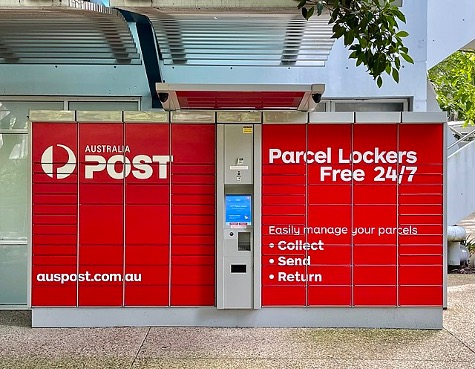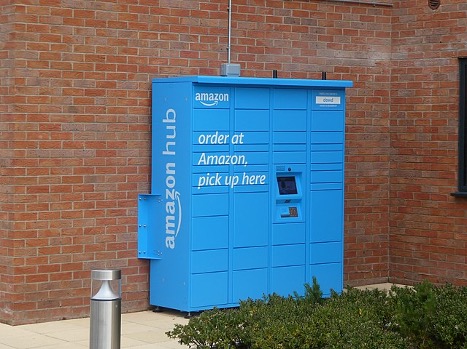Parcel Lockers – Greener, Cheaper, and More Convenient
Parcel Lockers – Greener, Cheaper, and More Convenient
By Howard Weir, Tale Ørving (Transportøkonomisk institutt), and Lorena Axinte & Nacho Sarrió (Bax & Company).
Recent years have seen cities become a testbed for new and innovative solutions as logistics companies attempt to solve the infamous last mile problem. By far the most expensive, complicated, and polluting part of the logistics chain, the last mile has received a great deal of focus as new technologies and smarter tracking and information systems allow delivery solutions to be better tailored to specific situations.
Amongst the numerous solutions, one that stands out is that of automated parcel lockers. While delivery and collection points have a long history, advances in technology combined with the ubiquity of smartphones have allowed the process to be automated. Packages are delivered to a secure locker that alerts customers when their package has been delivered. The lockers are placed in safe, easily reachable locations, and packages can be picked up at the customer’s convenience.
The range of services relying on this solution is also diversifying, with players such as laundry companies, restaurants, and supermarkets also looking into parcel lockers to deliver products and services. Some cities are even looking into peer-to-peer applications, which allow citizens to exchange goods without an intermediary company.

Dropping door-to-door deliveries
From a logistic operator’s perspective, one of the most significant advantages of parcel lockers is that they no longer need to visit each customer individually. They save time, reduce their emissions, and cause fewer traffic conflicts. Operators save costs and need fewer drivers, and subsequently vehicles, to deliver the same number of packages. Customers no longer have to wait at home for delivery windows that can stretch over several hours and can instead go to the nearest drop off point and pick up their package whenever it works best for them. Depending on the provider and the system used, customers might also have the flexibility to choose among several drop-off points in their neighbourhood/city.
Automated lockers can be more flexibly located than traditional pick-up points and can (and must) be distributed across a wider network because of their smaller footprint and lower capacity. This increases the ease of access for customers without significantly complicating a delivery driver’s route. Parcel lockers can also be used to reach customers who would otherwise be too difficult, time-consuming, or expensive to deliver to individually, like in rural areas with long distances between homes.
A study of parcel lockers carried out by Polish carrier InPost suggests that using parcel lockers in dense urban areas has the potential (in the best case scenario) to halve the number of kilometres driven, increase the number of packages delivered per courier by a factor of 10, and reduce C02 emissions from 300g per package delivered to just 14g. Though this rosy picture makes parcel lockers sound like a silver bullet, their implementation is deceptively complicated and requires careful deployment to be an effective part of the delivery chain.
Location, location, location

Placement is by far the biggest deciding factor for determining how successful an individual locker will be. Lockers must be strategically located such that they are convenient, secure, and easy to reach. Their position should be considered within a wider context, both at city and neighbourhood levels, and ideally integrated into a network. Lockers must also comply with regulations and not be a hindrance to others.
Sharing limited street and sidewalk space is a contentious issue, something Amazon discovered first-hand when they mistakenly placed their boxes in a way that partially blocked the sidewalk in a Chicago park. Such missteps create pushback from local communities and can damage public perception of new solutions. In this case, Amazon was forced to put their plans on hold as local politicians decided to review current regulations and potentially revoke their approval to place parcel lockers in public parks.
Despite occasional missteps, parcel lockers are generally well-received by customers, who like the flexibility and proximity that a network of well-placed parcel lockers brings. The challenge then is to strike the right balance between the number of lockers, placement, and dwell time of packages. Given their limited storage space, lockers need to maintain a flow rate high enough that they are economically viable while also having a relatively low package dwell time so that they are continually emptied by customers. The complexity of getting this balance right underlines the difficulties in adding a new link in the supply chain. Parcel lockers require new systems and routines to integrate them into existing transport networks and the added complexity can act as a barrier to their adoption.
Double-edged sword
The use of parcel lockers can have a synergistic effect with active transport, where parcel lockers located within 2km from consumers can encourage pickup by walking or biking, reducing traffic and creating positive health and environmental effects. However, the flip side is also true. If lockers are poorly located or spread too thinly throughout the city, they can become a source of unnecessary car trips, causing increased traffic and emissions. While a delivery company may still save costs in such a situation, it would essentially offload the extra trips and kilometres driven onto its customers, including the negative consequences of increased traffic.
Realising the benefits of parcel lockers for both logistic operators and consumers requires a multi-stakeholder approach. Careful planning on the side of logistics operators and city officials is needed to ensure that parcel lockers actually contribute to reducing the overall footprint, both environmentally and economically, of the last mile.
ULaaDS connection
In Groningen, as part of the ULaaDS trials, smart parcel lockers will be deployed in a park&ride zone in Hoogkerk, about 10km outside of the city centre. Mobility hubs are one of the most attractive locations for parcel lockers as people can easily incorporate a pickup into their daily commute. In this case, packages delivered during the day can be picked up by commuters returning home before they get in their cars to make the last leg of their journey, thus avoiding a detour to a separate location.
Solutions like the one from Groningen are part of a wider effort to determine exactly how to best implement parcel lockers into the rapidly changing and innovating area of last-mile logistics. The potential is there, but has yet to be fully realised.



